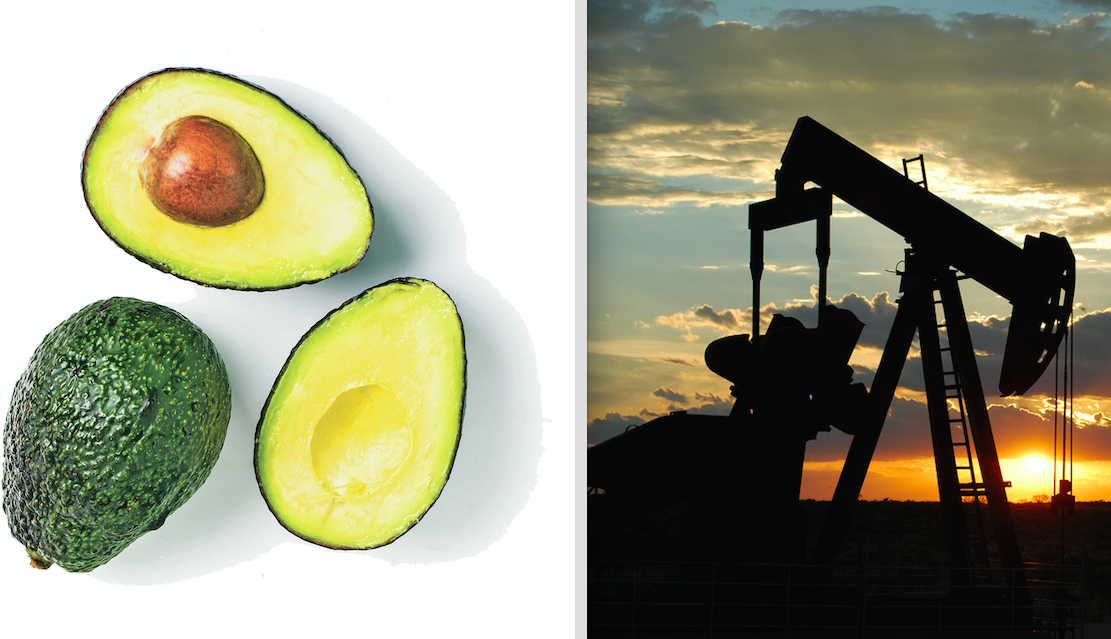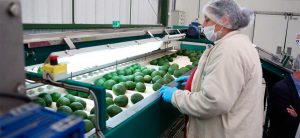 One fuels your car, the other seems to fuel instagram, but which is a better foundation for Colombia’s economic future?
One fuels your car, the other seems to fuel instagram, but which is a better foundation for Colombia’s economic future?
Throw-away comments from politicians always tend to spark headlines during election time – in this case a flurry of memes and a debate about the popular puckered superfood that is the avocado. The trouble with politics is that things often get divided into polar opposites: black or white, peace or war, oil or avocados.
It is not a question of agriculture or oil: right now, Colombia needs both of them.
Even during the oil boom between 2007 and 2015, when crude oil was the country’s biggest export and main source of foreign revenue, organisations like the OECD, the World Economic Forum and the IMF were urging Colombia to diversify – advice that holds to this day. The most recent IMF team to visit stressed the oil sector was crucial for medium-term growth, but added that “closing the infrastructure gap and making markets more efficient are critical to diversify the economy away from oil.”
Clearly, with oil still accounting for a significant chunk of GDP and almost a third of foreign investment in 2017, it is not as if the country can afford to turn off the pumps tomorrow. However, there are three clear problems with an over-reliance on oil. Firstly, as the oil price crash in 2013/2014 demonstrated, it is an unpredictable commodity, dependent on factors outside the government’s control. Secondly, until the government is able to sign a peace agreement with the ELN, operations will be at risk from attacks on pipelines, personnel and infrastructure. And finally, oil is a finite resource: there are fears that the country can only support current production for a further five years.
On the other hand, avocados are a growing and relatively new sector, but they are also not the only fruit with roots in the Colombian economy. These dark green fruits, along with exotic fruits, coffee, cocoa, rice, bananas, palm and flowers, look set to play an ever more important role.
Agriculture was the fastest growing sector of the economy last year. Moreover, the sector is both central to – and dependent on – the construction of a lasting peace. According to DANE, in 2017 agriculture grew by 4.9% and created 291,000 new jobs.
At an agricultural event in March, President Santos stressed, “the figures from the agricultural sector are strong. Between 2010 and 2017 the value of agricultural GDP grew by 25% from COP$27.7 trillion to COP$34.6 trillion.”
With hugely diverse geographic, weather and soil conditions, the country is ideally placed to capitalise on its agribusiness potential. Rural communities currently continue to be plagued by violence, even post-conflict, but the hope is that the farming industry will be able to thrive now that the FARC have demobilised.
Related: IMF says Colombian economy ‘at turning point’
Agriculture Minister Juan Guillermo Zuluaga also highlighted the importance of new market segments that have a higher growth potential. “Although traditional sales continue to lead, new sectors such as the hass avocado and other fresh fruits stand out.”
This is because the market for traditional products such as coffee or potatoes is relatively saturated, whereas there is still a lot of growth potential for things like exotic fruits and herbs.
Keeping it green
Since the avocado spat was sparked by questions about the environmental damage caused by hydrocarbons, it should not be forgotten that agriculture can wreak havoc too. The World Wildlife Fund point out that sustainable farming practices can help preserve critical habitats and improve soil quality, but, “when practiced without care, farming presents the greatest threat to species and ecosystems.”
One example of this is the surge of avocado production in Mexico, which has been widely criticised for contributing to deforestation and ecological damage from pesticides and fertilizers. Avocado farming also uses about two or three times as much water as farming potatoes.
Sustainable agriculture is exactly what the government wants to expand. Minister Zuluaga told European colleagues at a meeting in February, “The current government has initiated work on several fronts to ensure that agricultural and livestock activities take into account good practices, and that those practices do not damage the environment but instead preserve it.”
Infrastructure improvements are also going to be essential. High logistical costs of moving products around the country significantly hamper competitiveness. Farmers need to be able to compete on an international stage, which means the planned construction of over 4,400 miles of new roads that is part of the 4G program, as well as the investment in airports and seaports will be as important as the sun, rain and fertilizer in ensuring the budding avocado industry can flourish.
All told, the economic and political developments of recent years have planted the seeds for continued agricultural growth. And while it’s clear that people won’t be fuelling their cars with ajiaco just yet, the country certainly has to move away from oil, and avocados will play their part in a post-oil economy.
Growth of avocados Photo: Minagricultura Global demand for avocados – the ‘superfood’ packed with vitamins and creamy ‘good fat’ – has skyrocketed in the last decade. Prices have continued to rise as farmers struggle to keep up with the ever-increasing demand. Global avocado production doubled between 2000 and 2016 when it hit 5.57 million metric tons. About 80% of the avocados consumed worldwide are hass avocados, smaller, darker and thicker-skinned than the lorena variety that is more common here. Colombia was actually relatively slow to bring its guacamole to the party – partly because hass avocados require different conditions, and it took some time for growers to adapt. Now, having more than tripled their exports since 2012, Colombia is a rising star in the avocado market. Mexico dominates, accounting for about a third of the global market. Colombia ranked 14th in the world in 2016 with export sales totalling USD$35 million. Last year sales hit USD$52 million. The main export market for Colombian avocados is Europe – predominantly the Netherlands, Spain and the UK. But the country’s exporters are now turning their eyes to Asia. China imported 32,100 tons of the green grenades in 2017. The market there is dominated by Mexico, Peru and Chile, and Colombia would like to get in on the act. The country is also starting to make inroads into the US market. Their first sales there were in February 2017, but different import and pest control regulations have restricted progress. |




